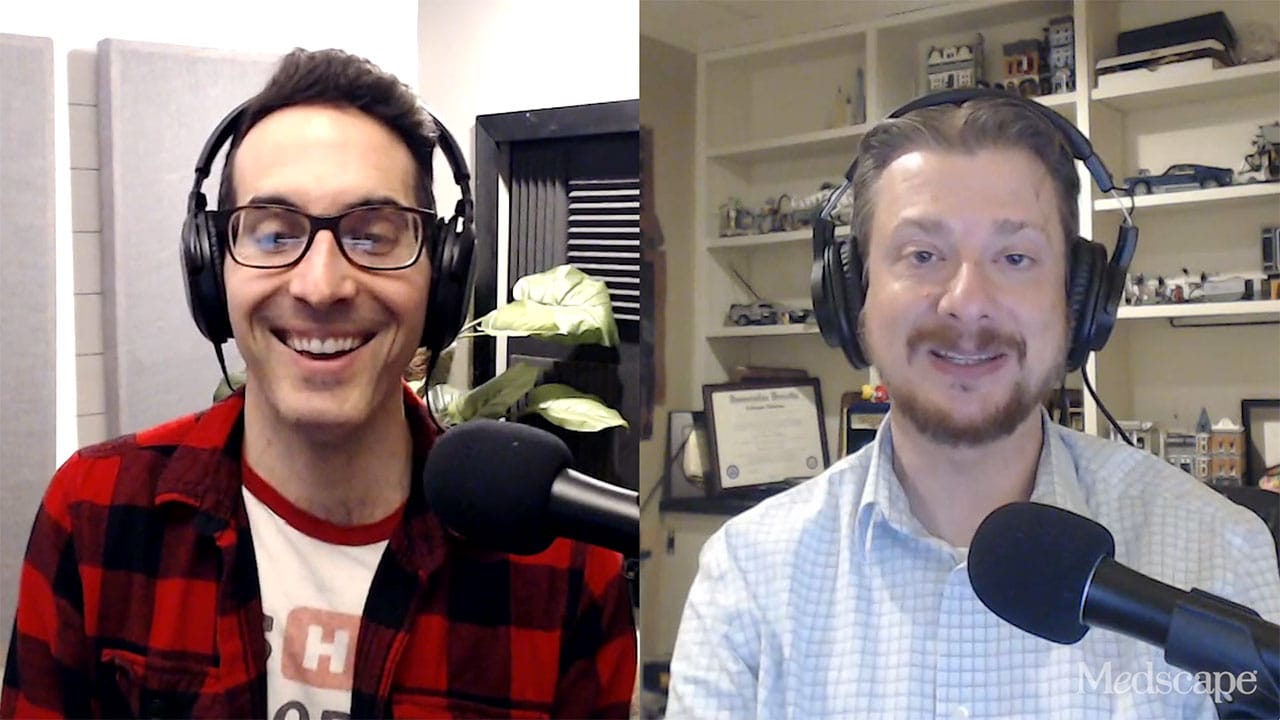By February of 2022, Ella, a 25-year-old behavioral interventionist in Colorado Springs, Colorado, was sick with strep-like symptoms for the third time in 3 months. She didn't bother to call her doctor.

The first two times she had strep throat, she'd tried to schedule an appointment with her newest primary care doctor but couldn't get in. They only had available appointments 5 and even 10 days out, but she'd already had symptoms for 3 days.
Until she graduated college, Ella had only known easy-access primary care. Her childhood family doctor and the nurse practitioners at her college clinic knew her. They anticipated her yearly allergies and knew about her predisposition for strep throat. Appointments were easy to schedule, and providers responded to her messages. But since entering the workforce and leaving her parent's insurance, the kind of primary care she'd come to rely on was nearly impossible to find.
"I went to urgent care, and that became my primary care," she told Medscape Medical News.
Patients Can't Get Appointments
Primary care is in crisis. A growing number of Americans, like Ella, can't access care when they need it. According to a 2024 report, 29% of adults and 14% of children don't have a regular source of care. Those looking for a new primary care provider face extensive research and 6- to 9-month waits for a new patient appointment — if they can get in at all.
But even those with a primary care provider face long wait times: Days to weeks for a sick visit and months for a wellness checkup. Over one third of Medicare beneficiaries wait more than a month to see a doctor. Accessing primary care is more difficult than access to surgery, physical therapy, or rehabilitative care, according to a survey of Medicare beneficiaries by the Commonwealth Fund.
"Shortages tend to be in rural and urban underserved areas, but now, you're hearing about primary care shortages in Boston, which is a mecca of healthcare," said Ann Greiner, president and CEO of the Primary Care Coalition.
While retail clinics, urgent care, and telehealth help close the gap in acute needs, they miss one of primary care's most critical benefits: A doctor who knows you. There's strong evidence that ongoing treatment from a primary care physician (PCP) who knows your history, family, and context results in better long-term outcomes and fewer hospitalizations and emergency room visits.
If patients continue to find it too hard to break into primary care or set up an appointment, experts are concerned that they'll stop pursuing primary care altogether.
Doctors' Hands Are Tied
"I want to highlight that this is not an issue of primary care doctors not wanting to be accessible," said Lisa Rotenstein, MD, MBA, a PCP and medical director of Ambulatory Quality and Safety at the University of California San Francisco Health. "These access issues are symptoms of the design of primary care in the United States."
Across the United States, there's a dearth of family medicine doctors, pediatricians, and internists. And without significantly more primary care providers, there's simply no way for all Americans to get optimal primary care. The Health Resources and Services administration estimates a current shortage of 13,000 primary care providers. And that shortage will skyrocket to 68,000 by 2036 as the number of Americans needing care balloons and existing PCPs retire with too few trainees to fill their shoes.
The American Association of Medical Colleges predicts a slightly lower shortage in 2036 — between 20,000 and 40,000 primary care physicians — only if more residency positions are funded nationwide.
However, even with more positions, medical trainees see little incentive to pursue primary care. Young doctors are avoiding primary care because of the pressures, Rotenstein said. There's incredible pressure to get reimbursement for primary care doctors. And the added administrative burden makes "the work life of these specialties not really manageable," she said.
Continued Shortages of PCPs
"We know there's a documented pajama time," Greiner said. For every 1 hour spent with a patient, primary care must spend nearly 2 additional hours on electronic health records and desk work, according to a study by the American Medical Association. Even with all those additional hours devoted to getting paid, primary care doctors make an average of $103,000 less annually compared with their counterparts in surgery and oncology.
It's not an attractive combination for a new doctor with medical debt. This year, Greiner said that residency positions in internal medicine and pediatrics went unfilled. Of those trainees who do go into a primary care specialty, many won't last. Only half of primary care residents practice in primary care 3-5 years later. The rest choose to subspecialize or become hospitalists.
These untenable demands on a primary care provider don't go unnoticed by patients. In Ella's attempts to invest in a new primary care relationship, she often doesn't feel heard and can tell the doctor is rushed. "[Urgent care is] probably not the best care because they don't know me, but it does seem like they are able to listen to me better," Ella said.
Patients Want to Invest in Primary Care
Primary care should work like putting money in a bank account, Rotenstein said. Young patients invest in the relationship and reap the benefits of a doctor who knows them later in life when they need more complex care. But if seeing a doctor is so difficult, many young people may stop investing in their PCP relationship.
"One thing…that I worry about in this kind of situation where patients really have to put in a lot of work to get the care they need is in inequities of care," Rotenstein said. "We know some of our patients are more able to undertake that work."
Alternatively, the primary care shortage could be reshaping how patients seek care. A 2023 study showed the proportion of primary care preventative visits increased over 20 years. Policies under the Affordable Care Act were the driving force. But it's also true that sick visits are being diverted to urgent care.
Ella told Medscape Medical News she doesn't even consider primary care for sick visits at this point, "I can't wait 5 days or a week and a half. Unless I have bigger issues, like I need tests, I'm not even going to go to primary care." It's possible that other patients also see primary care as a place for testing and wellness checks and leave sick visits to retail and urgent care.
The Road Ahead
There's no single fix for primary care, but experts agree that the fee-for-service model is a core issue for the specialty. In a 2021 report, the National Association of Engineering and Medicine said that primary care reform needs to include higher reimbursement rates for primary care and that US primary care should be restructured so that payers "pay primary care teams to care for people, not doctors to deliver services."
In the current model, the doctor-patient clinic time is the only income-generating part of a primary care practice. A better model would consider the communication, administration, teams, and support doctors have to fund to provide the best primary care.
"We need to change how we pay and how much we pay, so [primary care doctors] are properly incentivized to build out a team to provide the comprehensive care you need," Greiner said.
In the meantime, primary care doctors are adapting. Some drop down to part-time to account for the additional administrative workload. Others are transitioning to concierge services to offer the quality of care they want while getting the income they need. Still, others specialize their practice, offering primary care to a subset of the population, like older adults.
Employers are also looking to improve care access for their employees, hiring in-house doctors to provide primary care onsite. Greiner recently met with a group of chief medical officers from major companies to discuss expanding primary care access via the workplace.
The efforts to adapt amid a broken system are admirable, Rotenstein said. And whatever a PCP has to do to keep practicing in primary care is laudable. The only problem with these adaptations is they largely limit a doctor's patient pool and, therefore, limit access, she said. More significant reforms that adequately reimburse primary care and incentivize new doctors are still needed.
As for Ella, she got married. Her wife is in the military, so now she has Tricare, which comes with a more streamlined process to access primary care. However, doctor shortages are just as evident in that system. The couple called to schedule new patient appointments after their recent move to Virginia. The first available ones were 6 weeks out.
Donavyn Coffey is a Kentucky-based journalist reporting on healthcare, the environment, and anything that affects the way we eat. She has a master's degree from NYU's Arthur L. Carter Journalism Institute and a master's in molecular nutrition from Aarhus University in Denmark. You can see more of her work in Wired, Teen Vogue Scientific American, and elsewhere.

.webp) 2 weeks ago
6
2 weeks ago
6




























 English (US)
English (US)